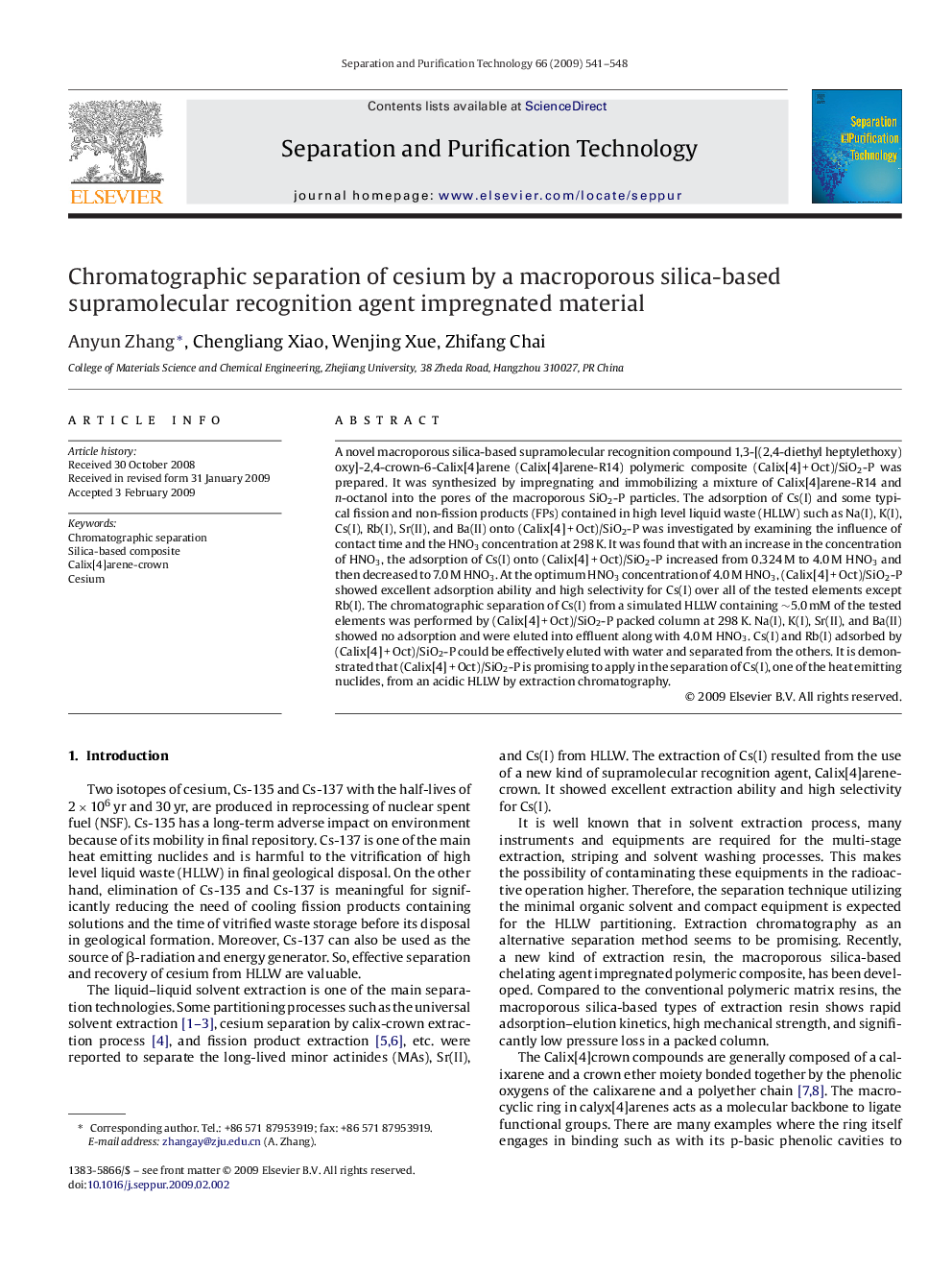| Article ID | Journal | Published Year | Pages | File Type |
|---|---|---|---|---|
| 643471 | Separation and Purification Technology | 2009 | 8 Pages |
A novel macroporous silica-based supramolecular recognition compound 1,3-[(2,4-diethyl heptylethoxy)oxy]-2,4-crown-6-Calix[4]arene (Calix[4]arene-R14) polymeric composite (Calix[4] + Oct)/SiO2-P was prepared. It was synthesized by impregnating and immobilizing a mixture of Calix[4]arene-R14 and n-octanol into the pores of the macroporous SiO2-P particles. The adsorption of Cs(I) and some typical fission and non-fission products (FPs) contained in high level liquid waste (HLLW) such as Na(I), K(I), Cs(I), Rb(I), Sr(II), and Ba(II) onto (Calix[4] + Oct)/SiO2-P was investigated by examining the influence of contact time and the HNO3 concentration at 298 K. It was found that with an increase in the concentration of HNO3, the adsorption of Cs(I) onto (Calix[4] + Oct)/SiO2-P increased from 0.324 M to 4.0 M HNO3 and then decreased to 7.0 M HNO3. At the optimum HNO3 concentration of 4.0 M HNO3, (Calix[4] + Oct)/SiO2-P showed excellent adsorption ability and high selectivity for Cs(I) over all of the tested elements except Rb(I). The chromatographic separation of Cs(I) from a simulated HLLW containing ∼5.0 mM of the tested elements was performed by (Calix[4] + Oct)/SiO2-P packed column at 298 K. Na(I), K(I), Sr(II), and Ba(II) showed no adsorption and were eluted into effluent along with 4.0 M HNO3. Cs(I) and Rb(I) adsorbed by (Calix[4] + Oct)/SiO2-P could be effectively eluted with water and separated from the others. It is demonstrated that (Calix[4] + Oct)/SiO2-P is promising to apply in the separation of Cs(I), one of the heat emitting nuclides, from an acidic HLLW by extraction chromatography.
